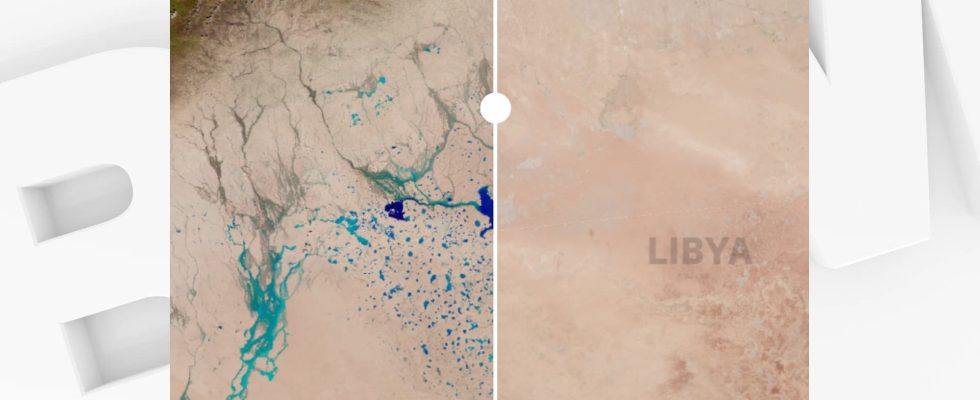Libya is devastated after Storm Daniel passed overnight from Sunday to Monday. The images of the submerged city of Derna in the northeast of the country are striking.
A country under water. Libya is suffering the consequences of the passage of storm Daniel during the night from Sunday to Monday. According to a report from the authorities sent to the Reuters news agency, more than 5,300 people have lost their lives, and 10,000 are missing.
Satellite images show that the country, usually desert, seems to be covered with immense lakes. These are actually monstrous floods. The National Meteorological Center of Libya recorded torrential rains where an average of 150 to 240 mm of rainwater fell per hour. A record was even reached, 414 mm.
30,000 displaced
A town in the northeast of the country, Derna, seems to be paying the heaviest price. “At least 30,000 people displaced” in Derna, the International Organization for Migration (IOM) said in a report on Wednesday.
Witnesses and journalists from the Reuters agency described the scene. They saw many corpses and families searching for their missing loved ones. At the same time, humanitarian aid convoys are on the way, including trucks carrying bulldozers tasked with clearing the roads.
These vehicles have a gigantic construction site ahead of them. Satellite images show that the Wadi Derna, a river that runs through the city, has completely burst its banks. An overflow normally prevented by dams located upstream. Buildings which, as shown in the photo (bottom left) have given way.
As a result, the houses located nearby were razed. The coastal city and its waterfront are transformed into a brown sea. The green spaces appear very damaged.
Apart from Derna, other towns like Al-Marj were also devastated by the passage of the storm. For example, we can see agricultural land transformed into muddy lakes.
France offers its help
To support the country in this ordeal, Emmanuel Macron announced the dispatch of emergency teams from Civil Security as well as a field hospital, i.e. around “fifty civilian and military personnel who can treat 500 people per day” . Teams which should be operational by the end of the week.

